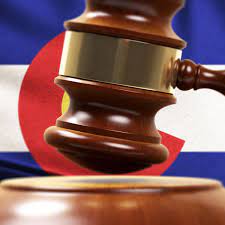
Judicial Branch Job description, Roles/Responsibilities, and Qualifications
The judiciary is the third arm of government. The Supreme, Circuit, Magistrate (local), and Municipal (city) courts make up the Judiciary. The legal system gives the law its interpretation.
The judicial branch is responsible for determining the meaning of laws, how to apply them in real-world situations, and if a law violates the Constitution’s principles. Our country’s highest law is the Constitution. The judicial branch includes the United States Supreme Court, the country’s highest court. The Supreme Court is composed of nine justices who are appointed by the President and ratified by the Senate. The justices hear cases that have progressed through the court system. Judicial Branch Job description
👉 Relocate to Canada Today!
Live, Study and Work in Canada. No Payment is Required! Hurry Now click here to Apply >> Immigrate to CanadaThe judicial branch interprets laws, applies laws to specific instances, and determines whether laws contradict the Constitution. It is made up of the Supreme Court as well as other federal courts.
The Supreme Court’s primary responsibility is to rule on issues that deviate from the United States Constitution. Once the Supreme Court rules on a case, it can only be reversed by another Supreme Court ruling or by modifying or rewriting the Constitution. This is a powerful ability that has the potential to change the lives of many people.
Read Also: Chief of Staff to CEO Job Description, Roles/Responsibilities, and Qualifications
Members of the Judicial Branch are nominated by the President and confirmed by the Senate, as opposed to the executive and legislative branches, which are elected by the people.
Article III of the Constitution, which established the Judicial Branch, gives Congress broad authority to shape and govern the federal courts. Even the number of Supreme Court Justices is determined by Congress; there have been as few as six at times, and the current number (nine, with one Chief Justice and eight Associate Justices) has only been in place since 1869. The Constitution also allows Congress the authority to establish courts inferior to the Supreme Court; to that aim, Congress established the United States district courts, which hear the majority of federal cases, and 13 United States courts of appeals, which hear appeals from district courts.
The President appoints and the Senate confirms members of the Judicial Branch. Congress has the authority to shape the federal judiciary, which includes the ability to decide the number of Supreme Court justices. The Supreme Court now has nine justices: one Chief Justice and eight Associate Justices. However, there were only six Justices at one point in US history.

Responsibilities of the Judicial Branch
- State law interpretation Information Guide Nigeria
- Resolving legal issues
- Punishment of lawbreakers
- Civil cases are heard.
- Individual rights guaranteed by the state constitution must be protected.
- determining the guilt or innocence of people accused of breaking state criminal statutes
- Assisting the legislative and executive branches of state government.
Read Also: Controller Job Description, Roles/Responsibilities, and Qualifications
Roles of Judicial Branch
- Conducting criminal investigation searches and arrests.
- For at least 10-20 years, influencing Supreme Court judgments
- Law interpretation (both a “checks and balances” role and a regular role)
- Determining whether laws and activities are/are not constitutional (both a “checks and balances” role and a regular role)
- Possessing authority over “all things legal”
- Supervising criminal trials
- Making certain that criminal sanctions are equitable
- Determining whether a person is guilty or innocent of a crime
- Resolving civil or personal rights problems Romantic Love Message
- Interpreting constitutional provisions of legislature-enacted laws and determining what is to be state law when none exists in particular situations. If the Supreme Court or the General Assembly later overrules or modifies the court decision, it becomes a precedent to be applied in similar instances; and,
- Determining if a law violates the United States Constitution
Judicial Branch job qualifications/skills
The primary qualifications for judicial employment vary depending on the post, although you can qualify for some with a high school diploma and two years of clerical experience. A Juris Doctor degree or equivalent training and experience is required for several top posts, particularly those on important courts. To perform the tasks and responsibilities of a judicial position, exceptional memory, and computer software skills are required. In some circumstances, extra abilities such as bilingualism, telephone skills, or expertise with case management software may be required. Factors such as finishing in the top 10% of your law school class or passing the Bar test can help you stand out from the crowd. JAMB Portal
👉 Relocate to Canada Today!
Live, Study and Work in Canada. No Payment is Required! Hurry Now click here to Apply >> Immigrate to CanadaRead Also: Camp Counselor Job Description, Roles/Responsibilities, and Qualifications
Skills and Abilities
Diverse life skills, experience, and/or education that improve and enable a justice of the peace’s work
Decision Making
- Capability to make sound, practical, and timely decisions
- Superior intellectual, analytical, and decision-making abilities
- Ability to maintain an open mind while listening to both sides of an argument
- Ability to remain neutral and exercise sound judgment, even in the face of an actual or perceived conflict of interest
Communication
- Excellent skills in attentive active listening
- Superior capabilities in both oral and written communication in English, as well as, if appropriate, in French
- A talented communicator who is comfortable addressing a wide variety of audiences, both in big and intimate settings
- Superior interpersonal abilities, particularly the capacity to carry oneself in a manner that is both dignified and judicious. NYSC Portal
Read Also: Lawyer Job Description, Roles/Responsibilities and Qualifications
Professional Skills
- Capacity for learning as well as a motivation to do so
- Computer proficiency ranging from intermediate to advanced levels
- The ability to travel and the willingness to do so when required
- Capability to perform without supervision in a self-directed setting while efficiently balancing multiple responsibilities
- The capability of working at a rapid rate while also coping with the stress, anxiety, and solitude that come with playing a judicial role
Personal Characteristics
Social
- a passionate interest in people and in humanity, including exposure to different cultures and participation in their exchange Good Morning My Love Message
- a track record of dedication to volunteer work in the community
- familiarity with and an interest in the regional and societal concerns that are the root causes of matters that are brought before the courts.
Interpersonal
- Compassion, sensitivity, and a reverence for all people’s inherent dignity
- Courtesy
- Patience 15 best Muslim football players in the world 2023 (with photos)
- Moral fortitude and high ethics
- a track record of honesty, integrity, and fairness
- Interpersonal qualities that are respectable and command authority
- Confidence without pomposity or authoritarian inclinations
Judicial Branch Salary structure in the USA
| Year | District Judges | Circuit Judges | Associate Justices | Chief Justice |
| 2022 | $223,400 | $236,900 | $274,200 | $286,700 |
| 2021 | $218,600 | $231,800 | $268,300 | $280,500 |
| 2020 | $216,400 | $229,500 | $265,600 | $277,700 |
| 2019 | $210,900 | $223,700 | $258,900 | $270,700 |
| 2018 | $208,000 | $220,600 | $255,300 | $267,000 |
| 2017 | $205,100 | $217,600 | $251,800 | $263,300 |
| 2016 | $203,100 | $215,400 | $249,300 | $260,700 |
| 2015 | $201,100 | $213,300 | $246,800 | $258,100 |
| 20141 | $199,100 | $211,200 | $244,400 | $255,500 |
| 2013 | $174,000 | $184,500 | $213,900 | $223,500 |
| 2012 | $174,000 | $184,500 | $213,900 | $223,500 |
| 2011 | $174,000 | $184,500 | $213,900 | $223,500 |
| 2010 | $174,000 | $184,500 | $213,900 | $223,500 |
| 2009 | $174,000 | $184,500 | $213,900 | $223,500 |
| 2008 | $169,300 | $179,500 | $208,100 | $217,400 |
| 2007 | $165,200 | $175,100 | $203,000 | $212,100 |
| 2006 | $165,200 | $175,100 | $203,000 | $212,100 |
| 2005 | $162,100 | $171,800 | $199,200 | $208,100 |
| 2004 | $158,100 | $167,600 | $194,300 | $203,000 |
| 2003 | $154,700 | $164,000 | $190,100 | $198,600 |
| 2002 | $150,000 | $159,100 | $184,400 | $192,600 |
| 2001 | $145,100 | $153,900 | $178,300 | $186,300 |
| 2000 | $141,300 | $149,900 | $173,600 | $181,400 |
| 1999 | $136,700 | $145,000 | $167,900 | $175,400 |
| 1998 | $136,700 | $145,000 | $167,900 | $175,400 |
| 1997 | $133,600 | $141,700 | $164,100 | $171,500 |
| 1996 | $133,600 | $141,700 | $164,100 | $171,500 |
| 1995 | $133,600 | $141,700 | $164,100 | $171,500 |
| 1994 | $133,600 | $141,700 | $164,100 | $171,500 |
| 1993 | $133,600 | $141,700 | $164,100 | $171,500 |
| 1992 | $129,500 | $137,300 | $159,000 | $166,200 |
| 19912 | $125,100 | $132,700 | $153,600 | $160,600 |
| 1990 | $96,600 | $102,500 | $118,600 | $124,000 |
| 1989 | $89,500 | $95,000 | $110,000 | $115,000 |
| 1988 | $89,500 | $95,000 | $110,000 | $115,000 |
| 19873 | $89,500 | $95,000 | $110,000 | $115,000 |
| 1986 | $78,700 | $83,200 | $104,100 | $108,400 |
| 1985 | $78,700 | $83,200 | $104,100 | $108,400 |
| 1984 | $76,000 | $80,400 | $100,600 | $104,700 |
| 1983 | $73,100 | $77,300 | $96,700 | $100,700 |
| 1982 | $73,100 | $77,300 | $96,700 | $100,700 |
| 1981 | $70,300 | $74,300 | $93,000 | $96,800 |
| 1980 | $67,100 | $70,900 | $88,700 | $92,400 |
| 19794 | $61,500 | $65,000 | $81,300 | $84,700 |
| 1978 | $54,500 | $57,500 | $72,000 | $75,000 |
| 19775 | $54,500 | $57,500 | $72,000 | $75,000 |
| 19766 | $44,000 | $46,800 | $66,000 | $68,700 |
| 1975 | $42,000 | $44,600 | $63,000 | $65,600 |
| 1974 | $40,000 | $42,500 | $60,000 | $62,500 |
| 1973 | $40,000 | $42,500 | $60,000 | $62,500 |
| 1972 | $40,000 | $42,500 | $60,000 | $62,500 |
| 1971 | $40,000 | $42,500 | $60,000 | $62,500 |
| 1970 | $40,000 | $42,500 | $60,000 | $62,500 |
| 19697 | $40,000 | $42,500 | $60,000 | $62,500 |
| 1968 | $30,000 | $33,000 | $39,500 | $40,000 |
Read Also: Civil Engineer Job Description, Roles/Responsibilities, and Qualifications
Types of Judicial Branch job
- Court reporter
- Sheriff
- Stenographer
- Paralegal
- Law librarian
- Law clerk
- Jury consultant
- Court interpreter
- Judge 30 cool small tattoos for men
- Attorney
Check JAMB RESULT
Check and Confirm: How much is Dollar to Naira








